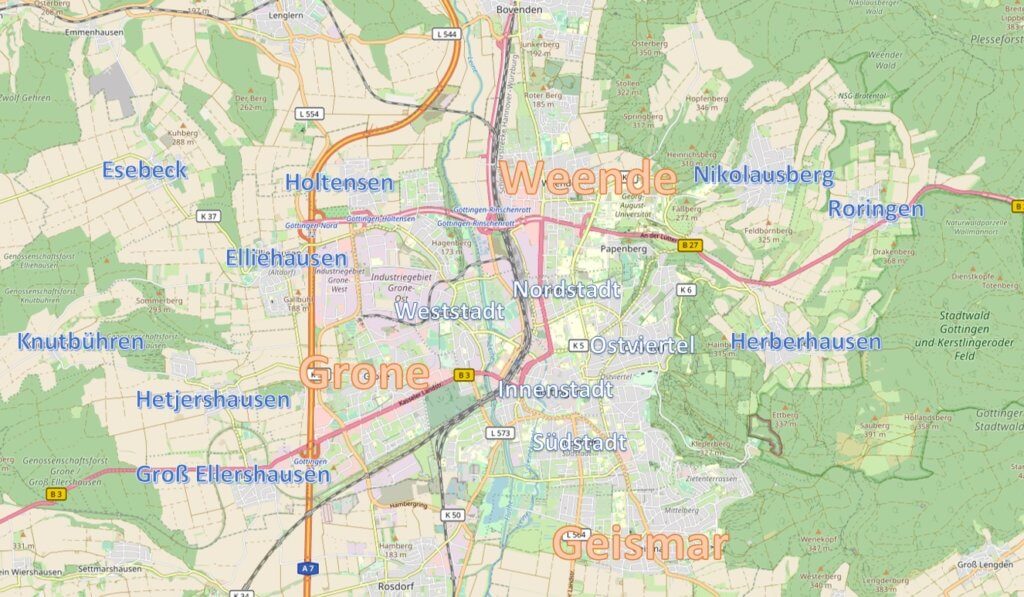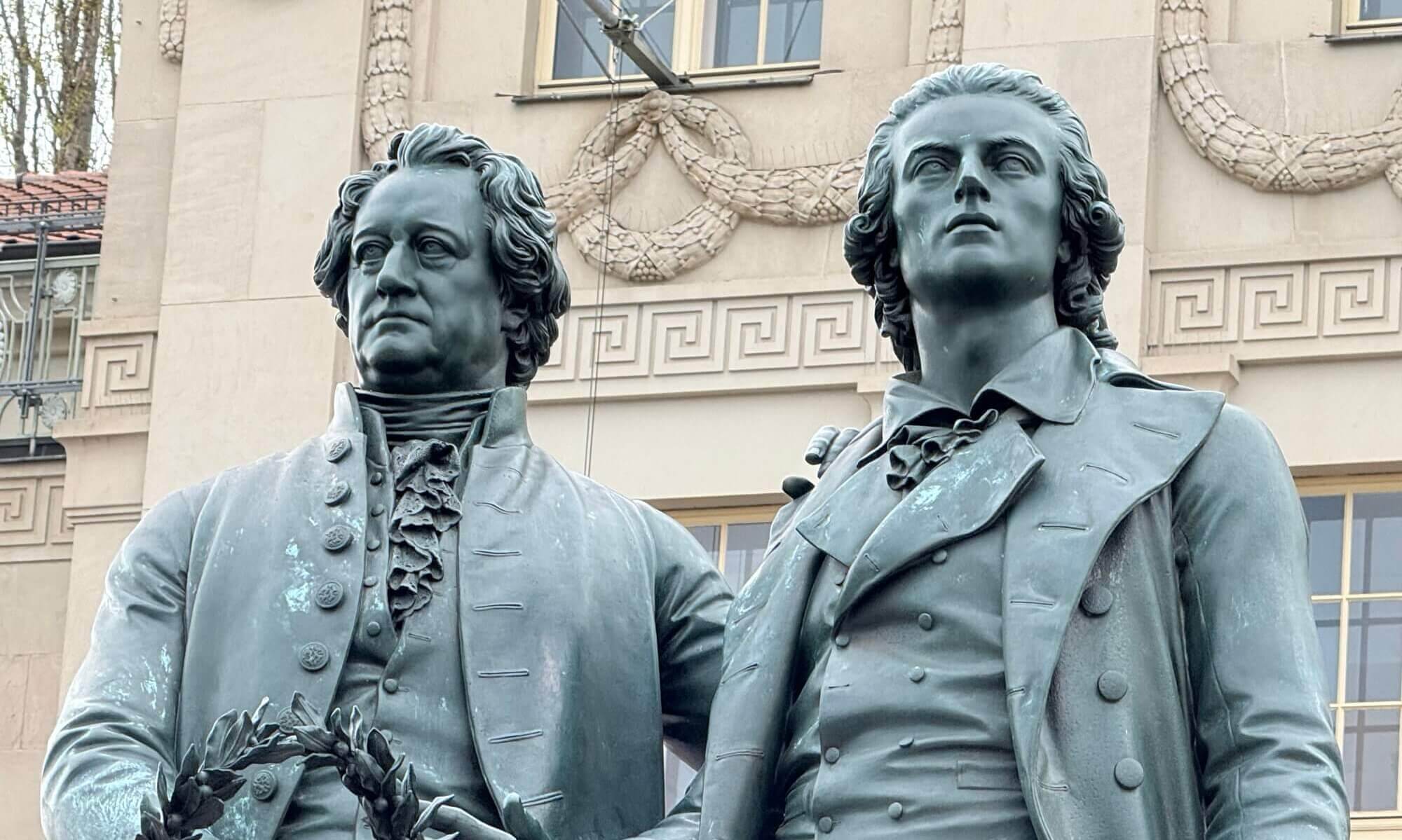The city structure of Göttingen, Germany, is quite easy to understand. It consists of 18 areas and nine localities but they are like three rings around the ancient city centre (Innenstadt). First, there are the city quarters named after the cardinal directions (Nordstadt, Weststadt, Südstadt and Ostviertel). Then the three localities that were independent until 1964 follow: Weende, Grone and Geismar. And around that, you will find six villages in the West (Esebeck, Holtensen, Elliehausen, Knutbühren, Hetjershausen and Groß Ellershausen) and three in the East (Nikolausberg, Roringen and Herberhausen).

The Core
What I like about Göttingen is that it has a clear structure all centred around the old city centre (Altstadt, Innenstadt). You can still have a walk on the former fortifications (the ‘Wall‘) and you will find the old town hall, the Gänseliesel statue, the Wilhelmsplatz with the representation building of the university, the theatres and a lot of bars and restaurants there. Did you know that Göttingen has the highest bar density in northern Germany?
North of the city centre you will find the main campus of the university with the characteristic blue tower and the Nordstadt – a residential city quarter shaped mostly by students. West of the city centre you will find the river Leine, the railway station and the Weststadt. Especially the so-called Blümchenviertel (were the streets are named after flowers is migrant-shaped). In this area, you’ll also find the Schützenplatz (used for fun fairs), the Lokhalle as a concert venue and institutions like the musa.
South of the city centre there are wonderful residential zones mixed with former university buildings. The Südstadt reaches quite far to the south and includes also the indoor swimming pool and sauna (Badeparadies Eiswiese). The Ostviertel in the East is known to be the place for the better people, especially as the residential zone for professors. There is some truth to this. You’ll find beautiful houses in green areas, the Schillerwiese park and easy access to the forest.
The Big Three
In 1964 the city of Göttingen was enlarged by including Geismar, Grone and Weende – formerly independent cities. This former independence can be experience still today – in local city structures, festivities and rituals. Geismar is located in the very south of Göttingen and includes many nice residential zones and the Kiessee lake. It has grown rapidly in several steps like the Kiesseekarree, the conversion of the former military grounds on the Zietenterrassen and now it is growing very fast up towards the forest and the Kehr.
Weende can be found in the North of the city and has its village structures preserved. You can also find the park of an old monastery that is wonderful for a walk. It is especially growing because of a shift of university institutions towards the North and the many new facilities at the Nordcampus. Grone is in the East and has nicer areas (around the old centre) and regions that were more problematic in the past – but things got better in places like Grone-Süd. The inhabitants are very proud of their city quarter and you can find interesting sights like the old cemetery with the Nobellrondell here.
Villages in the West
In the West of the city, you can find six villages that are sometimes closer to the industrial zones and the city (like Elliehausen or Holtensen) and some more secluded (like Knutbühren, Esebeck or Hetjershausen). Groß Ellershausen is located at the major road B3 and well-reachable especially from the motorway. All of them are rather rural but received a good infrastructure buy having the Kaufpark, a major shopping mall close to motorway A7. Belonging to Holtensen is the Holtenser Berg – a remote settling created in 1967. It was once fancy, then it became infamous – but some people like it.
Villages in the East
In the East of Göttingen next to the forest of the city, you can find the three pure-residential villages Nikolausberg, Herberhausen and Roringen. There is a connection by bus but they are really outside of the city. You’ll have to leave it on road B27 to get to them. But living there must be nice because of the possibility to get out into nature very fast. Additionally, they are pretty close to the northern campus of the University of Göttingen (Nordcampus).
Not part of the city
Not belonging to Göttingen are two municipalities often mispronounced by new-arrivals: Bovenden (in the North) and Rosdorf (in the South). They are very well connected to the city and close-by (especially Rosdorf is in walking distance to Göttingens Südstadt and city quarter Geismar) but fully independent. Because of the good connection and (formerly) much lower costs for renting a flat or buying ground to build a house these two regions were ever-growing during the last decades.
